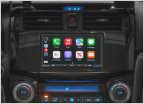-
Welcome to 4Runners.com!
You are currently viewing as a guest! To get full-access, you need to register for a FREE account.
As a registered member, you’ll be able to:- Participate in all 4Runner discussion topics
- Transfer over your build thread from a different forum to this one
- Communicate privately with other 4Runner owners from around the world
- Post your own photos in our Members Gallery
- Access all special features of the site
5th Gen 4Runner Overland Build
Discussion in '5th Gen 4Runners (2010-2024)' started by strannik, Feb 4, 2024.
Page 2 of 2
Page 2 of 2


 Fridge slide experiences?
Fridge slide experiences? Used wrong fluid for power steering
Used wrong fluid for power steering Roof Rack vs Tow Hitch Cargo
Roof Rack vs Tow Hitch Cargo Nerf bars
Nerf bars Apple CarPlay
Apple CarPlay Cargo trunk liner?
Cargo trunk liner?
















































































